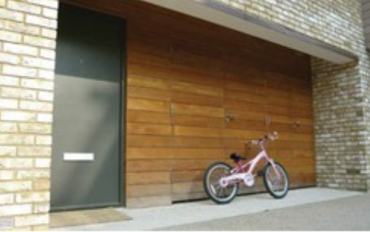BASE HEADER
Parking Standards SPD
How much cycle parking?
3.1 The standards for the amount of cycle parking required for residential development are set out in Table 1. Residential developments of all types and scales will be expected
to achieve these standards. This, plus the principles below, recognise the assertion of Manual for Streets (para 8.2.1 p99) that "..providing enough convenient and secure cycle parking at people's homes and other locations for both residents and visitors is critical to increasing the use of cycles. In residential developments, designers should aim to make cycle storage at least as convenient as access to car parking."
Cycle parking – how should it beincorporated?
3.2 Residential cycle storage should be both convenient (in terms of siting and ease of use) and secure. The pros and cons of different types of cycle storage are explored below.
On plot
| Configuration | Pros | Cons | Recommendations |
|---|---|---|---|
| INTEGRAL TO THE PROPERTY FABRIC
(ACCESSED FROM AN EXTERNAL ELEVATION) |
|
|
|

PROS
Integral
| Configuration | Pros | Cons | Recommendations |
|---|---|---|---|
| GARAGE |
|
|
|
| FREESTANDING BESPOKE CYCLE STORE OR SHED |
|
|
|
| INTERNAL STORAGE SPACE (IN RESPECT OF APARTMENT BLOCKS AND MULTIPLE OCCUPANCY PROPERTIES) |
|
|
|
Shared cycle storage
3.3 In some residential developments there may be a need/desire for shared external cycle parking for visitors and/or residents. Where this is to be provided (e.g. in the form of Sheffield Stands or cycle sheds), the following principles should be applied:
- It should be sited in a legible location, ideally close to a principal route
- Stands should be sited so they do not obstruct pedestrian or cycle desire lines along a street
- Cycle storage should benefit from natural surveillance from surrounding properties, and other movement activity.
- Storage provision should be secure and lit as appropriate.